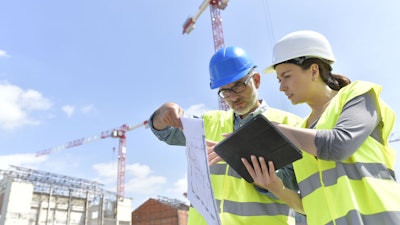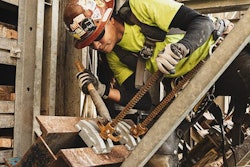
Results of a workforce survey by the National Association of Women in Construction (NAWIC) and Safe Site Check In indicate that job opportunities for women in construction are on the rise. Released in conjunction with Women in Construction week, March 7-13, the survey of more than 700 women actively working in the industry shows 71% of respondents agree that opportunities for women in construction are increasing, while 28% believe they are about the same and only 1% reports the opportunities are decreasing.
“Now is a great time for women to work in construction. There are more job opportunities across a variety of professional, trade and administration fields and the gender pay gap is significantly smaller. On average, women in construction earn 99.1% of their male colleagues,” said Crissy Ingram, executive director, NAWIC.
In terms of equal treatment compared to their male counterparts, the industry has further to go. Survey participants were asked to rank employers on a scale of 1-100 in treating men and women equally. While more than half responded with a ranking of 80 or above, nearly a quarter of respondents assessed their employer at below the 60 mark.
- 24% ranked their employer at 100
- 22% ranked their employer at 90 or above
- 13% ranked their employer between 80-89
- 11% ranked their employer between 79-70
- 6% ranked their employer between 69-60
- 24% ranked their employer below 60
The workforce survey was conducted in February 2021 with 718 NAWIC members participating. Survey participants represent all areas of the construction industry across private and public sectors. Job titles and roles include: C-Suite executives (CEO, COO, CFO), vice presidents, business owners, attorneys, accounting, administration, appraisers, architects, draftsman, electricians, engineers, estimators, HVAC technicians, inspectors, interior design, HR, pipefitters, plumbers, project managers, roofers, safety officers, sales, schedulers, welders and more.
The majority of survey participants (49%) have been working in construction for 16 or more years; 15% have worked 11-15 years; another 15% had 6 to 10 years of experience; and 21% have worked in construction five years or less. In terms of the breakdown between office and field, 57% work in the office, 40% work both in the office and the field and 3% work solely in the field.
Long-term Impacts of Pandemic on Jobsite Safety
More than half of the women surveyed (58%) indicate they have continued to work about the same amount as they did prior to the COVID-19, with 32% actually seeing their hours increase. Only 10% reported working fewer hours during the pandemic.
Just 30% of those responding to the survey expressed concern about contracting COVID-19 while at work. This may be due, at least in part, to the introduction of new jobsite and office protocols, which have included technology driven processes as well as traditional approaches to preventing the spread of the virus on jobsites.
When asked which COVID-19 safety protocols their employer enforce, survey participants indicated the following:
- Staying home if you’re feeling sick – 96%
- Social distancing – 90%
- Frequent handwashing – 76%
- Health screenings – 44%
- Digital check in – 27%
- Contact tracing – 16%
Survey participants were then asked, “Which of the new COVID-19 protocols do you think will continue after the pandemic?” The top three responses were frequent handwashing (75%), followed by digital check in and contact tracing, which remained at the same percentages as current protocols.
Based on the data, it appears that digital check-in technology, an innovation that resulted from COVID-19, is likely to become part of jobsite protocols after the pandemic.
“We’re not surprised to see digital check-ins become part of post pandemic protocols. Originally developed for secure health screenings and private contact tracing, digital check in saves hours each day while eliminating paper based processes,” said David Ward, CEO, Safe Site Check In. “Today, we’re seeing construction businesses use digital check in to assign tasks, locations, and supervisors to employees upon arrival, support facilities planning, and reconcile invoices with hours worked.”
Other protocols are likely to be relaxed. Social distancing dropped from 90% to 22%, staying home if you’re feeling sick plummeted 88 points to 8%, and health screenings decreased by half, going from 44% to 22%.
Information provided by the National Association of Women in Construction and edited by Becky Schultz.

















